Recipes
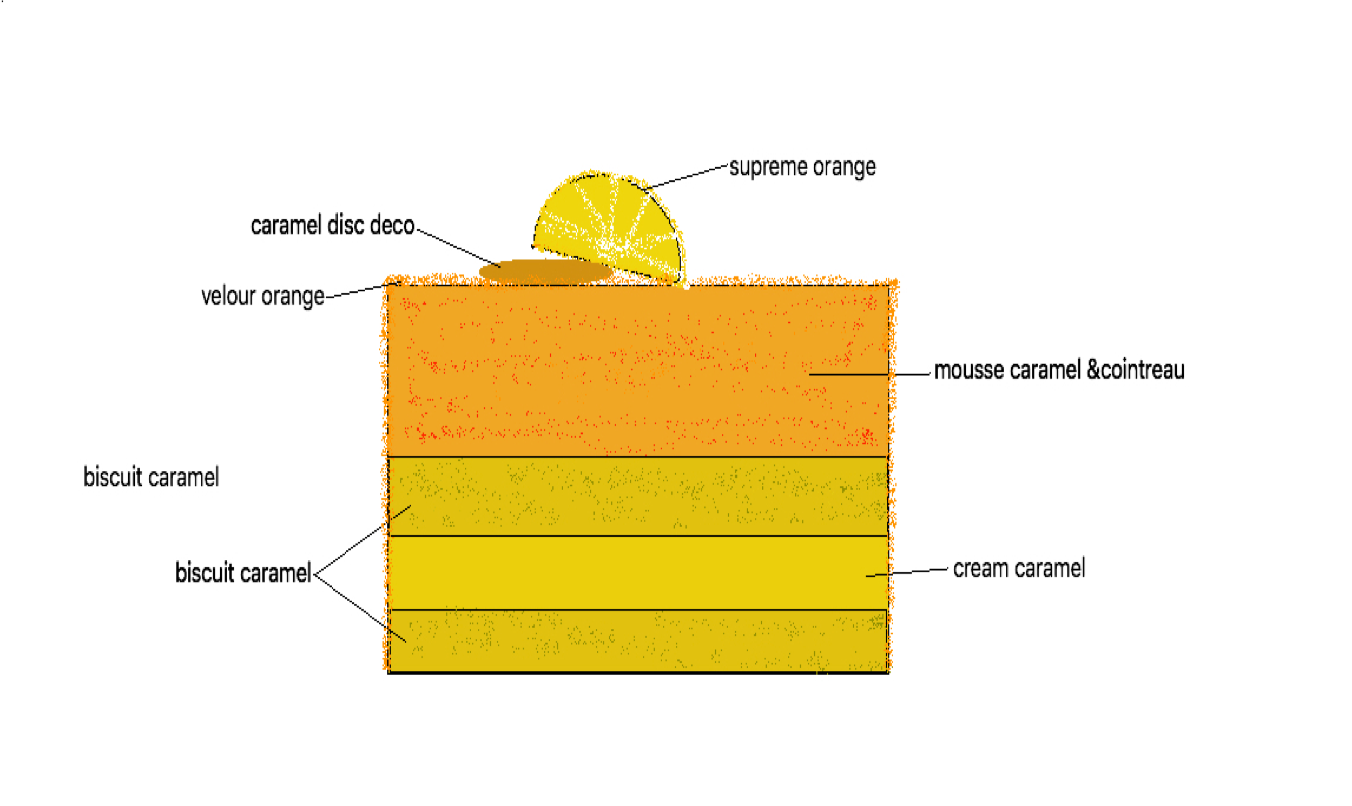
Caramelis
In a frame of 35.5 cm by 28.5 cm and 4 cm high, place half of the caramel biscuit sheet in the bottom, pour over the rest of salted butter caramel, place the second part of the caramel biscuit sheet and place in the freezer. After setting, place the Cointreau caramel mousse on top to close the frame. Put everything in the freezer. Cut the frame by half, then 4 strips on each part. You will get 8 entremets of 4 people, 17 cm long and 7 cm wide. Make a partial coating of each dessert with gourmet icing then prepare the whipped cream Ghana wave-shaped with a pocket with a socket in Saint Honoré. Decorate with some chocolate chips and orange slices.
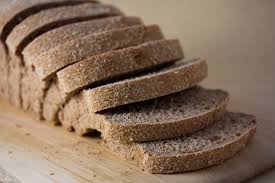
Whole Wheat Toast Bread
mixing: Add all the ingredients to the mixing bowl. In a spiral mixer, mix on first speed for 3 minutes in order to incorporate the ingredients thoroughly. The dough consistency should be medium. Turn the mixer to second speed and mix for about 3 minutes more, until a fairly strong gluten development has been achieved. Desired dough temperature: 24℃ Bulk fermentation: 2 hours. folding: Fold the dough once, after 1 hour. divinding fermentation: Divide the dough into appropriate-sized pieces, depending on the pan size in which they will bake. Preshape lightly into rounds or blunt cylinders and place on a lightly floured work sur- face, seams up. Cover the rounds with plastic. When the dough has relaxed sufficiently (10 to 20 minutes), shape it into tight cylinders. Place the dough in the loaf pans and cover with baker’s linen and plastic. final fermentation: 1 to 1 1⁄2 hours at 24℃ Baking: With normal steam, 200℃. Large pullmans will bake in 40 to 45 minutes. Smaller loaves will take be- tween 30 and 36 minutes, depending on dough weight. Thump the bottom of the loaves when you think they are done, and listen for a pronounced hollow sound.
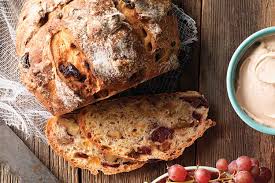
Whole Wheat Bread Hazelnut & Currant
Add all the ingredients except the pâte fermentée, hazelnuts, and currants to the mixing bowl. In a spiral mixer, mix on first speed for 3 min- utes in order to incorporate the ingredients. As the dough is coming together, add the pâte fermentée in chunks. If necessary, correct the hydration by add- ing water or flour in small amounts. The dough will firm up a bit once the nuts and currants are added, so be sure it is slightly loose at the early stages of mixing. Turn the mixer to second speed and mix for 3 minutes. The dough should be supple and some- what loose, and the gluten should be moderately developed. Now add the hazelnuts and currants all at once, and mix on first speed just until they are evenly incorporated. In a spiral mixer, the reverse function of the bowl can be used to encourage speedy incorporation. Desired dough temperature: 24℃ Bulk fermentation: 2 hours. folding: Fold the dough after 1 hour of bulk fer-mentation. dividing and shaping: Divide the dough into 1.5-pound pieces. Preshape lightly into rounds and place on a lightly floured work surface, seams up. Cover the rounds with plastic. When the dough has relaxed sufficiently (10 to 15 minutes), shape into round or oval loaves, place them either into floured bannetons or between folds of lightly floured baker’s linen, and cover with plastic. Very nice rolls can also be made with the dough. If you are making just a few loaves, take a few moments and pick out the currants on the surface. This prevents them from overbaking and becoming bitter. This is not practical for large production. final fermentation: Approximately 1 to 11⁄2 hours at 24℃ Baking: Transfer the risen loaves onto the loading conveyor or peel. A simple scoring pattern is best, as the blade will be running into hazelnuts and currants as you slash the surface. Presteam the oven, load the bread, and steam again. Bake at 250°C. Lower the oven temperature by 220℃ after about 20 minutes to prevent the extra sugars in the dough from color- ing the bread too quickly. Open the oven vents after the loaves show color, in order to finish the bake in a drying oven. Loaves scaled at 900gr will bake in approximately 40 minutes.
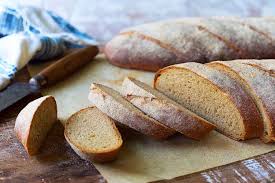
Whole Wheat Bread
mixing: Place all the ingredients except the pâte fermentée in the mixing bowl. In a spiral mixer, mix on first speed for 3 minutes in order to incorporate the ingredients. As the dough is coming together, add the pâte fermentée in chunks. If necessary, correct the hydration by adding water or flour in small amounts (the absorption of whole-wheat flour varies considerably; don’t hesitate to add a fair bit of water if the dough seems dry). Finish mixing on second speed for 3 minutes. The dough should be supple and slightly loose, and the gluten should be moder- ately developed. Desired dough temperature: 24℃ Bulk fermentation: 2 hours. folding: Fold the dough after 1 hour of bulk fer- mentation. dividing and shaping: Divide the dough into 450-900gr pieces. Preshape lightly into rounds and place on a lightly floured work surface, seams up. Cover the rounds with plastic. When the dough has relaxed sufficiently (10 to 15 minutes), shape into round or oval loaves, place them either into floured bannetons or between folds of floured baker’s linen, and cover with plastic. The bread can also be baked in loaf pans or shaped into rolls. final fermentation: 1 to 11⁄2 hours at 24℃ Baking: Transfer the risen loaves onto the loading conveyor or peel. Slash the desired scoring pattern with a blade. Pre-steam the oven, load the bread, and steam again. Bake at 200ºC Open the oven vents after the loaves show color, in order to finish the bake in a drying oven. Loaves scaled at 750gr will bake in approximately 40 minutes. The honey contributes color to the bread, so if the loaves are darkening too quickly, lower the oven temperature by 220℃
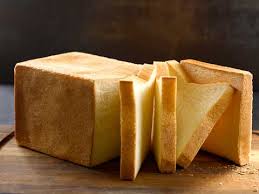
White Toast Bread
mixing: Add all the ingredients to the mixing bowl. In a spiral mixer, mix on first speed for 3 minutes in order to incorporate the ingredients thoroughly. The dough consistency should be medium. Turn the mixer to second speed and mix for about 3 minutes more, until a fairly strong gluten development has been achieved. Desired dough temperature: 24℃ Bulk fermentation: 2 hours. folding: Fold the dough once, after 1 hour. divinding fermentation: Divide the dough into appropriate-sized pieces, depending on the pan size in which they will bake. Preshape lightly into rounds or blunt cylinders and place on a lightly floured work sur- face, seams up. Cover the rounds with plastic. When the dough has relaxed sufficiently (10 to 20 minutes), shape it into tight cylinders. Place the dough in the loaf pans and cover with baker’s linen and plastic. final fermentation: 1 to 1 1⁄2 hours at 24℃ Baking: With normal steam, 200℃. Large pullmans will bake in 40 to 45 minutes. Smaller loaves will take be- tween 30 and 36 minutes, depending on dough weight. Thump the bottom of the loaves when you think they are done, and listen for a pronounced hollow sound.
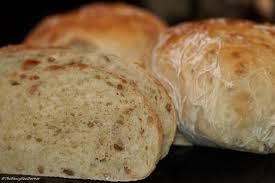
Whey Bread
mixing: Place all the ingredients in the mixing bowl. Mix for 8 minutes on first speed. The dough will be fairly loose textured with modest gluten de- velopment. Desired dough temperature: 24℃ bulk fermentation3 hours. folding: Fold the dough twice, after 1 hour and 2 hours of fermentation. Bring as much strength as possible into the dough by folding with confidence and care; this will overcome the intentional lack of significant gluten development that occurred during mixing. dividing anshaping: Divide the dough into 450-900gr pieces (or larger). Preshape, and when sufficiently relaxed, shape into strong round loaves. Place in floured bannetons. final fermentation About 1 hour at 24℃ Baking: With normal steam, 250℃ Bake this bread until it achieves a full rich crust color. You may need to lower the oven temperature by 220℃ for the last part of the bake. Loaves scaled at 900gr should bake for 36 to 38 minutes. A full bake is recommended.
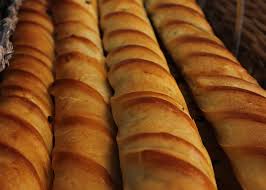
Viennois Dough
in a dough mixer and hook, mix all ingredients for 10 minutes until the dough is detached from the bowl. place in the fridge 24 hours After fermentation process, cut piece of dough to 300-350gr and shape a baguette. Cut straight away with rasor blade and egg wask Place in proofer Bake at 165ºC for 20mn
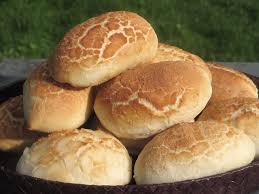
Vienna Bread
soften the yeast in a little water. Fresh yeast: mix with about 2 times its weight in water, or more. Ideal water temperature: 38°C Active dry yeast: Mix with approximately 4 times its weight in water. Ideal water temperature: 40°C Mix the remaining ingredients, including the rest of the water, in the mixture bowl. Add the dissolved yeast, taking care not to let it come in contact with the salt. Mix with a smooth and developed dough.
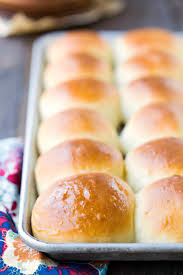
Sweet Rolls
Soften the yeast in part of the liquid, using a separate container. Combine the fat, sugar, salt, milk solids, and flavorings and mix until well combined, but do not whip until light. Add the eggs gradually, as fast as they are absorbed. Add the liquid and mix briefly. Add the flour and yeast. Mix to a smooth dough.
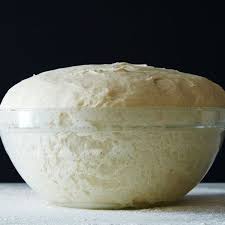
Sweet Fermented Dough
In a bowl or a bowl of a food processor. Mix all the ingredients and knead until you get a fairly soft, non-sticky dough. Put into a ball, film the salad bowl and let stand at room temperature for 15h.
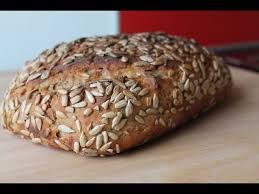
Sun Flower Seed Bread
Place all the ingredients, and the toasted sunflower seeds, but not the pâte fermentée, in the mixing bowl. In a spiral mixer, mix on first speed for 3 minutes in order to incorporate the ingredients. As the dough is coming together, add the pâte fermentée in chunks. If neces- sary, correct the hydration by adding water or flour in small amounts. Turn the mixer to second speed and mix for 3 to 3 1⁄2 minutes. The dough should be somewhat loose, but with definite dough strength and gluten development. Desired dough temperature: 24℃ Bulk fermentation: 2 hours. folding: Fold the dough after 1 hour of bulk fermentation. dividing and shaping: Divide the dough into 750gr pieces (or make rolls with smaller pieces). Preshape lightly into rounds and place on a lightly floured work surface, seams up. Cover the rounds with plastic. When the dough has relaxed sufficiently (10 to 20 minutes), shape it into tight round loaves. Dip the top side of each loaf into a dampened cloth, then into a sheet pan of raw sunflower seeds (don’t dip the outer surface of the bread into the toasted seeds, since they will be vigorously toasted in the oven). Place the loaves in floured bannetons or onto lightly floured baker’s linen, top side up, and cover with plastic. final fermentation: Approximately 1 to 11⁄2 hours at 24℃ Baking: Transfer the risen loaves onto the load- ing conveyor or peel. Because the loaves are topped with sunflower seeds, scoring is a little difficult. A few quick strokes with a straight razor blade or some snips with scissors are sufficient. Pre-steam the oven, load the bread, and steam again. Bake at 220℃. Open the oven vents after the loaves show color, in order to finish the bake in a drying oven. The malt syrup contributes color along with flavor, and the oven temperature can be lowered by 220℃ if the loaves color too quickly. Loaves scaled at 450-900gr will bake in approximately 40 minutes.
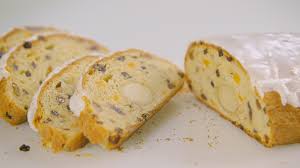
Stollen fruit bread
in a bowl with a hook, make a dough with flour, eggs, egg yolk, sugar, salt, dried yeast, and milk. mix well to obtain a good elastic paste. add the butter and candied fruit. make a small paton of 300 gr and add the almond paste in the dough and form a small bread cook at 180℃ and sear with the icing sugar
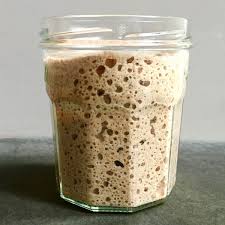
Sourdough Starter
mix all ingredients by hand and place at room temperature for 6 hours. then place in the fridge 12 hours. refill with flour t65 and warm water half the total weight. the next day remove the half of the dough and repeat the operation for 7 days before use Leaven must be alive (see gas bubbles and the smell of fermentation)
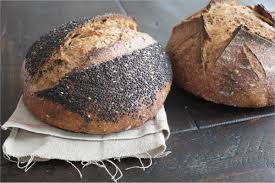
Sourdough Seed Bread
mixing: Add all the ingredients to the mixing bowl. In a spiral mixer, mix on first speed for 3 minutes, adjusting the hydration as necessary. Mix on second speed for another 3 minutes or so. The dough should have a moderate gluten development. Desired dough temperature 24℃ bulk fermentation: 2 1⁄2 hours. folding: Fold once after 1 1⁄4 hours or, if the dough seems to need more strength, fold twice at 50 minute intervals. dividing and shaping: Divide the dough into 450-900gr pieces, shape round or oblong. Alternatively, pan loaves can be made. These too can be retarded overnight, but they will most likely require some floor time (that is, time to warm up a bit at room temperature) before they bake, since the metal pans get quite cold once refrigerated and this slows the bread’s rise. final fermentation: Up to 8 hours at 6℃ or up to 18 hours at 4℃ baking: With normal steam, 250℃ for 40 to 45 minutes.
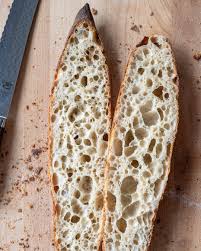
Sourdough Baguette
mix with the baker and at first speed for 5 minutes, continue in 2nd gear for 8 minutes. let rest 1 hour. divide at 350gr and let stand another 20 minutes. form the dough in the shape of a baguette and place on a layer. slow push at 4℃ for 12 hours and go to 18℃ for 3 hours. cook at 250 for 20 minutes
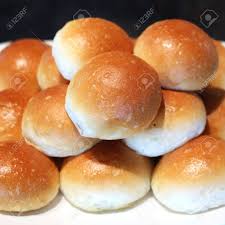
Soft Rolls
soften the yeast in a little water. Fresh yeast: mix with about 2 times its weight in water, or more. Ideal water temperature: 38°C. Active dry yeast: Mix with approximately 4 times its weight in water. Ideal water temperature: 40°C Mix the remaining ingredients, including the rest of the water, in the mixture bowl. Add the dissolved yeast, taking care not to let it come in contact with the salt. Mix with a smooth and developed dough. cook at 180℃ for 20 minutes
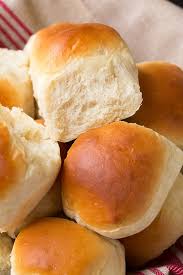
Sotf Butter Rolls
mixing: Place all the ingredients in the mixing bowl. In a planetary-style mixer, mix on first speed until the ingredients are incorporated, about 3 min- utes (for production of 50 dozen or more, a full-sized spiral mixer can be used). The dough should be of medium consistency. Turn the mixer to second speed and mix for about 5 more minutes, until the gluten network is moderately developed. Desired dough temperature: 24℃ bulk fermentation 1 hour. dividing and shaping: If using a 36-part dough divider, divide the dough into 2 pieces weighing 1.36 kg each. Don’t round or preshape the dough. If hand scaling, divide the dough into 45-80gr portions, trying to cut pieces that are square. Place the dough pieces on a sheet pan lined with parchment paper so that the sides of the individual pieces almost touch during the bake they will join, and there will be a minimum of crust. Allow the dough to proof fully, until the rolls are quite light to the touch. Baking: Just before the bake, brush the top of the rolls with melted butter. Bake at 190℃for 15 to 18 minutes, or until the tops are golden. The sides and center should remain soft and pliable. Brush again with butter when the rolls are removed from the oven.
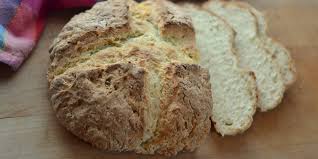
Soda Bread
mixing: Before making the actual mix, process the wheat flakes in a food processor until they are broken down. Don’t turn them into powder, though they should still have a coarse texture. dividing and shaping: Flour the work surface, turn out the dough, and sprinkle a light dusting of pastry flour over the top of the dough to facilitate dividing. Divide the dough into 1kg portions. To shape, cup both hands at the base of the dough and, with swift strokes, rotate the dough as you rapidly bring your hands (palms up) together and then apart, always at the base of the dough. This will bring the dough into a round cohesion while remain- ing gentle and not toughening it. Don’t expect the kind of structure sought in a loaf of white yeasted dough; simply bring the soda bread to roundness, tightening it only enough to eliminate any large air pockets inside the dough. Flatten the rounded piece of dough slightly, flour the surface thoroughly but not thickly with pastry flour, and then transfer it to a sheet pan lined with parchment paper. Check that the dough is still round, and flour the top again if need be. Now, use a plastic or metal dough cutter and divide the dough into 4 equal sections, north, south, east, and west. Don’t cut right through to the bottom, but do go down about 80 percent of the way. Baking: Place the soda bread in a 250℃ oven for 15 minutes, then lower the oven temperature to 220℃ and bake for an additional 20 minutes or so (the Home loaf, being lighter, will need only about another 15 minutes baking time).
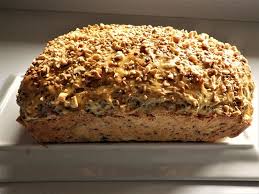
Seven Cereals Bread
Mix bread flour, rye flour, barley flour and cornmeal; add oats, flaxseed and millet and mix well. This ensures an even distribution of flours. Mix 10 minutes at first speed. Fermentation 11/2 hours at 24°C Processing: Make up as desired for bread dies or loaves. Cooking 220°C
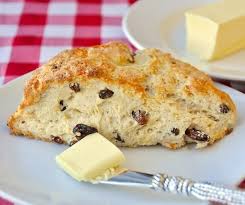
Scone Raisin
rub flour,baking powder, salt, sugar, butter for 45mn in 1st speed, add buttermilk and eggs mix well. rolls a 13cm and rolls the second fols to 12 cm use a cutter 5cm ∅ bake in deck oven at 220℃ for 10 mn
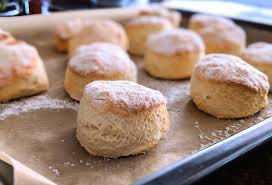
Scone Plain
rub flour,baking powder, salt, sugar, butter for 45mn in 1st speed, add buttermilk and eggs mix well. rolls a 13cm and rolls the second fols to 12 cm use a cutter 5cm ∅ bake in deck oven at 220℃ for 10 mn
